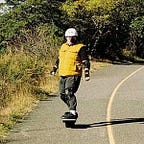Did Ross Perot cost George HW Bush the Presidency?
In 1992 for the first time in decades the United States had three headshot photographs in the Wikipedia sidebar for its Presidential election.
It’s not that it was the first election to have more than two people running (that happens every year), but it’s a rare event that a third party candidate garners enough votes to be considered a serious contender. In the end Ross Perot, an eccentric software executive from Texas, wound up getting 18.9% of the vote.
Perot didn’t wind up winning any state, but he did come in second place in a few states. For instance in Maine, a state that Clinton won, he narrowly received more votes than HW Bush. In 49 states none of the candidates managed to crack 50% at all, only Arkansas (Clinton’s home state) gave any of the three a simple majority.
A lot of Republicans felt Perot had cost HW Bush the Presidency, reasoning that his Texas businessman persona had siphoned more votes from Bush than from Clinton, and that had the election been run without Perot, HW Bush would have been a two-term President.
Are they right?
Let’s do the math!
So we need to make some simplifying assumptions here. Obviously it’s possible to win the Presidency without the popular vote, but since we don’t want to do a complex state-by-state model let’s just assume that generally the winner of the popular vote is also the person who wins the electoral college.
For instance four years earlier when Bush had been elected President he won 53.4% of the popular vote against Michael Dukakis’ 45.6%.
Further assumptions I’m going to make here: let’s assume there were only three options, nobody did any write-in votes for “Mickey Mouse” or whoever would have been the equivalent to “Harambe” in 1992, and every Perot voter had at least one second choice (so no one’s second choice was to stay home and not vote).
So, now for the math, let’s assume there is a three-way election in which three candidates, call them X, Y, and Z, receive x%, y%, and z% of the vote. Assume x> y >z.
I’m not some sort of voting scientist, but I’m willing to give this problem a go.
We know that some of Z’s voters would have X as their second choice, and some of them would have Y as their second choice, so what percent need to have Y as their second choice in order for Y to have been the winner without Z in the race?
Let n denote the percentage of Z voters who have Y as their second choice. For Y to win we need the following equation to hold.
x+(1−n)z<y+nz
If you solve that for n you’ll find the following:
Plug in the numbers for election ’92 and you get n> 0.64. In other words, at least 64% of Perot voters would have had to have Bush as their second choice to swing the result of the election. You can spot check its accuracy by just doing simple arithmetic, Bush received 37.5% of the vote, so to get to 50% he’d need an additional 12.5%, Perot received 18.9%. 12.5/18.9 = 0.66. Just 2% more. It seems logical that that extra 2% are needed to make up for write-in or other third-party voters.
Is 64–66% realistic?
Not really, exit polls indicated that Perot voters second choice was fairly evenly split (or split in thirds between, Bush, Clinton, and “wouldn’t vote”), though this doesn’t really comment much on how the race itself might have been different without Perot on the stage at the debate, for more on that check out this FiveThirtyEight video.
